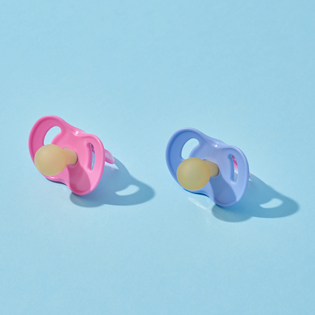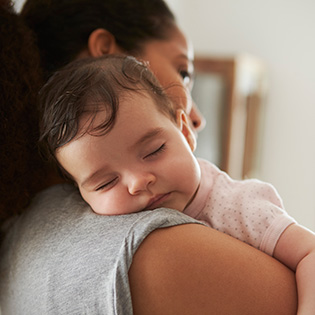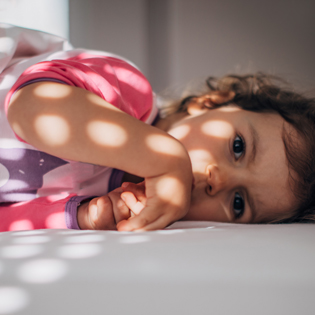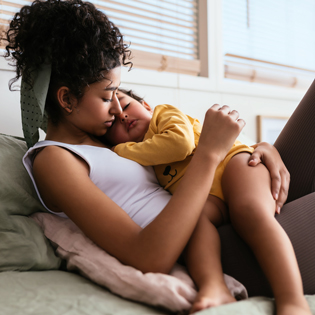All it takes is one bee sting for your child to learn that she should never touch a bee again. ("Look, Mommy, there's a fuzzy bug on this flower!") Unfortunately, for some kids, even one sting can be dangerous — so it's important to know how to handle bee stings in children and what to do if your little one gets stung.
When bees and wasps attack — or, more commonly, act when they're threatened or provoked — they inject venom into the skin. This venom contains proteins that affect the immune system, causing pain and swelling around the area that was stung.
Children who are allergic to bee venom can have a severe reaction to a sting, called anaphylaxis, which can be dangerous and even deadly without proper, prompt treatment.
What does a bee sting look like?
Chances are, you'll know when your baby or toddler gets stung by a bee (there will be tears), but fortunately, the worst of the pain should subside within an hour or two.
Whereas honeybees leave their stingers behind, other types of bees and insects, such as wasps, hornets and yellow jackets, will not.
Here are some of the most common symptoms of a bee sting:
- Pain or burning at the site of the sting (which can last for one to two hours)
- Itching
- Swelling (which can last for 48 hours)
- Redness (which can last for about three days)
If your child is allergic to bee stings, she may experience a serious allergic reaction called anaphylaxis, during which she may develop hives and/or have trouble breathing and swallowing.[1]
How to treat a bee sting in children
When dealing with a bee sting, time is of the essence. Here's what to do:[2]
Read This Next
- Get the stinger out (if there is one) ASAP. The less time a honeybee stinger remains in the skin, the less time the venom has to do its dirty work. You’ll see it sticking up out of the skin, and usually a little bit of the bee is left behind too. Scrape the stinger out with your fingernail, a credit card or other firm, flat object. It doesn’t matter which method you use — just act fast. Wasps, which include hornets and yellow jackets, don't leave a stinger.
- Gently wash the area with mild soap and water.
- Cool off the skin. To ease the pain and swelling, apply an ice pack or cold, wet washcloth to the bee sting for up to 20 minutes.
- Use an over-the-counter medication. If your little one is in pain, ease the ache with an age-appropriate dose of acetaminophen (like baby or children's Tylenol) or ibuprofen (like baby or children's Advil). Keep the safety guidelines for children's medication in mind: Never give acetaminophen to a baby under 2 months or ibuprofen to an infant younger than 6 months.
- Ask about an antihistamine. If your child is also itchy, ask her pediatrician if you can give her an OTC antihistamine. Calamine lotion or a corticosteroid cream can also be used to treat bee stings in children, since they relieve itching. It’s especially important to deal with any itchiness so your child isn’t tempted to scratch: Bee stings are an open, if teensy, wound — an invitation for infection-causing bacteria to sneak in.
- Go to the doctor or ER if you need to. Whisk your child to the doctor or emergency room ASAP if you think your child is having an anaphylactic reaction or if a bee manages to sting the inside of her mouth. You should also take your child to the ER if she was stung by multiple bees.
How to know if your child is allergic to bee stings
Unlike other types of allergies, you might not know your child is allergic to bees until after she's stung. Dial 911 or get your child to the emergency room right away if she shows any of the following signs of anaphylaxis:
- Wheezing or trouble breathing
- Swelling in the lips, tongue or face
- Hives
- Flushed or pale skin
- Weak or rapid pulse
- Dizziness
- Fainting
- Nausea
- Vomiting
- Loss of consciousness
Fortunately, treatment for anaphylaxis is quick and easy: A shot of epinephrine will relieve kids' symptoms almost as quickly as the bee sting brought them on.
You should also take your child to the pediatrician if she develops a large rash or extensive swelling around the bee sting, or if swelling and pain last longer than three days.
How to prevent bee stings in children
Sometimes a bee sting is brought on by nothing more than bad luck. But there are things you can do to avoid attracting — and irritating — bees.[3]
- Steer clear of places where bees might gather. This includes areas around garbage, flowers, trees with lots of fallen fruit underneath them, or dog poop, where the flies that flit around feces can attract wasps.
- Avoid outdoor sweet treats. Don’t give your child sweets or sweet beverages when she’s eating or drinking outside.
- Teach your tot not to swat at bees and other bugs. Some will sting if they feel threatened — even by a pint-sized palm.
- Cover up. If you have to be in an area where bees abound, dress your child in fitted long sleeves, pants, close-toe shoes and a hat. Avoid floral prints and bright colors, which can attract bees.
- Keep an EpiPen handy. If you know that your child is allergic to bees, have a shot of epinephrine handy at all times. There’s no such thing as playing it too safe.
Remember: If your child gets stung by a bee, try to keep a cool head and act fast. In most cases, the pain will subside in a few hours.












































 Trending On What to Expect
Trending On What to Expect





